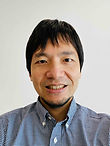Ken Suzuki, MD, PhD is a clinical academic in the field of cardiac surgery trained in both Japan and UK.
Suzuki’s research primarily aims to develop new therapies to mend broken heart. As heart failure remains a leading cause of death and disability, his research is extremely important in science, clinics, economy and society. Currently his major interest is how to use stem cells for the treatment of heart failure patients.
Suzuki’s multidisciplinary team intends to choose the most effective stem cell type and develop the most efficient delivery method to the heart with the ultimate aim of successful establishment of stem cell therapy as a standard treatment. Multiple innovative approaches developed from his study are about to be used for the patient treatment.
Research
Projects

Translational study of adult stem cell therapy for myocardial repair
Funded by The British Heart Foundation, Heart Research UK and others.
Adult stem/progenitor cells are able to improve cardiac performance and structure by repairing the damaged myocardium primarily through secretion of reparative factors (paracrine effects). Suzuki’s 20-year research suggested that allogeneic mesenchymal stromal cells are the most promising cell type for this approach to be a clinically successful at the moment. His research has also identified the issues associated with the current cell-delivery methods (i.e. intramyocardial and intracoronary injection), including poor donor cell engraftment and risks of complications such as arrhythmia occurrence and coronary embolism.
To solve these limitations, he has developed a safer and more effective cell-delivery approach, “epicardial placement” by using biocompatible materials/tissue engineering. In collaboration with companies, several methods are shortly entering to a clinical trial.

Alternatively activated macrophages for the treatment of heart failure and other diseases
Funded by The British Heart Foundation, Heart Research UK and others
Immunity and inflammation play a vital role in development of and recovery from heart failure. Suzuki’s group has investigated the role of high-mobility group protein 1(HMGB-1), toll like receptors (TLRs) as well as cardiac alternatively-activated (M2) macrophages in heart failure. In addition to elucidating their basic molecular/cellular biological aspects, we challenge to apply these data for development of innovative therapies of heart failure and other diseases including post-operative adhesions.

Pluripotent stem cell therapy for myocardial regeneration
Funded by The British Heart Foundation and others.
Embryonic stem cells and induced pluripotent stem cells are more promising to achieve myocardial regeneration (generation of new cardiomyocytes), compared to adult stem cells. However, these pluripotent cells remain associated with critical issues to initiate clinical application, including mass production of high-quality cells and regulation of cardiomyogenic differentiation (i.e. avoidance of tumour formation). In addition, insufficient maturation and inappropriate integration of stem cell-derived cardiomyocytes as well as suboptimal cell-delivery method into the heart have to be overcome. With firm determination to progress this approach toward clinical application, we currently conduct basics/translational research of these cells.
Publications
GFRA2 Identifies Cardiac Progenitors and Mediates Cardiomyocyte Differentiation in a RET-Independent Signaling Pathway.
Cell Reports, 2016 (16; 1026-1038)
Ishida H, Saba R, Kokkinopoulos I, Hashimoto M, Yamaguchi O, Nowotschin S, Shiraishi M, Ruchaya P, Miller D, Harmer S, Poliandri A, Kogaki S, Sakata Y, Dunkel L, Tinker A, Hadjantonakis AK, Sawa Y, Sasaki H, Ozono K, Suzuki K and Yashiro K
Toll-like receptor 9 protects non-immune cells from stress by modulating mitochondrial ATP synthesis through the inhibition of SERCA2.
EMBO Reports, 2014 (15; 438-45)
Shintani Y, Drexler HC, Kioka H, Terracciano CM, Coppen SR, Imamura H, Akao M, Nakai J, Wheeler AP, Higo S, Nakayama H, Takashima S, Yashiro K and Suzuki K




